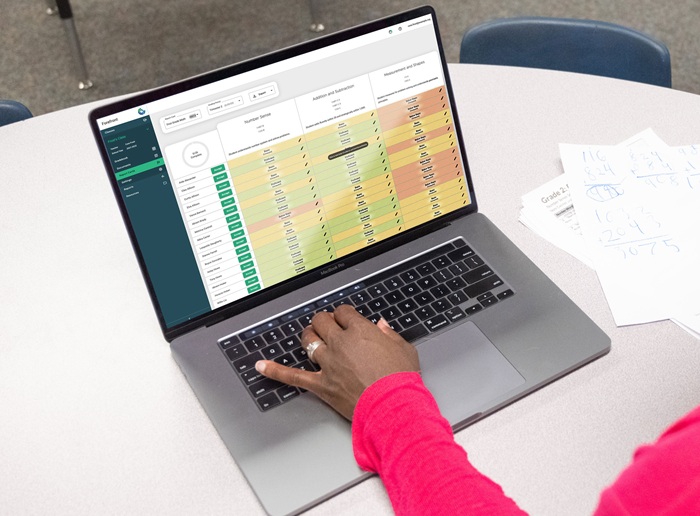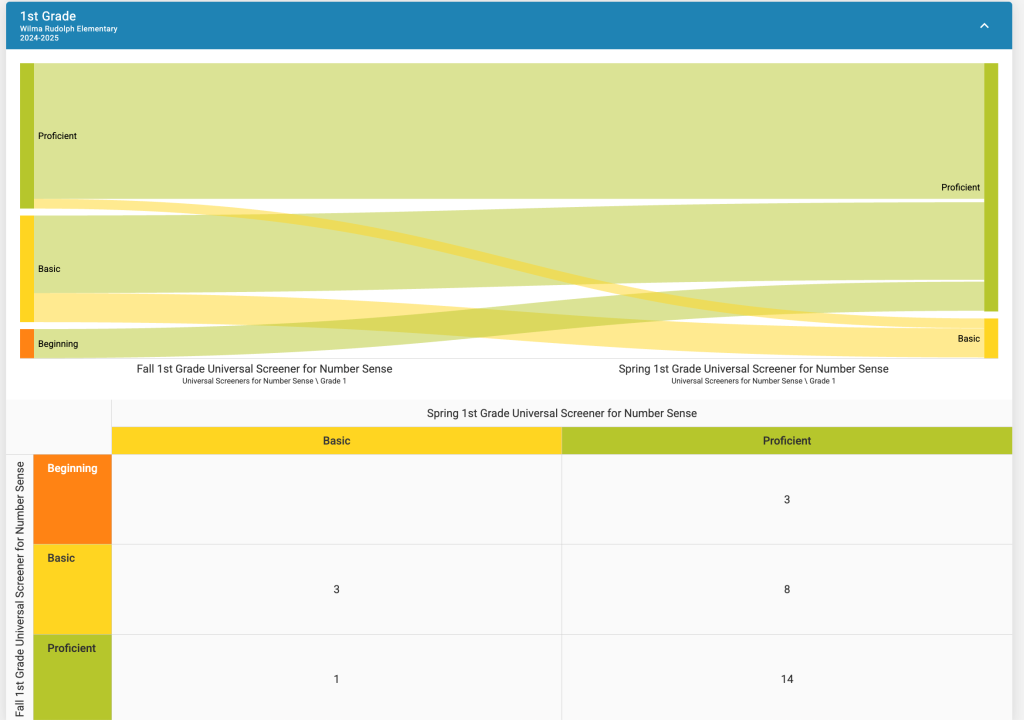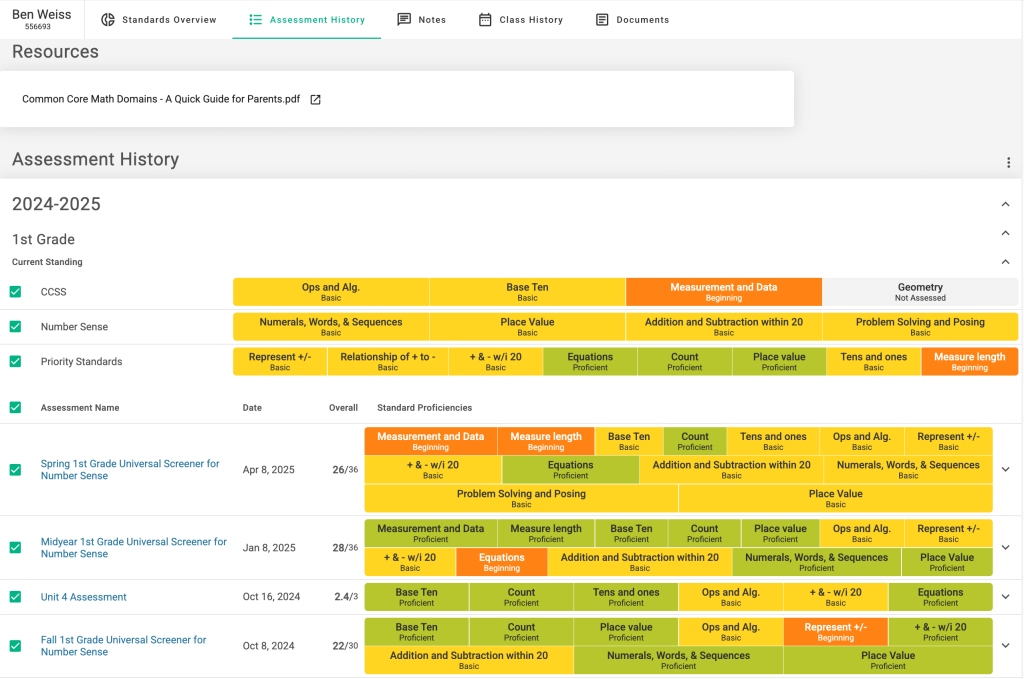Data tells stories—stories of growth, challenge, persistence, and achievement. As the 2024-25 school year concludes, educators have the perfect opportunity to listen closely to these narratives through thoughtful analysis of student data. Beyond the high-level reports required by administration, the detailed classroom-level data in Forefront offers teachers actionable insights that can transform end-of-year conversations with students and parents and build a stronger foundation for next year’s instruction.
Experienced educators know that end-of-year data analysis can feel like checking a box rather than meaningful practice. This changes when teachers approach data with specific, actionable questions. Forefront Education supports this work by helping educators see student performance and growth in meaningful ways. The following three key questions can guide teachers as they explore Forefront data at the end of the school year.
Question 1: What key concepts did students master, and which need reinforcement?
Understanding which standards and skills students have mastered versus those requiring continued support is perhaps one of the most actionable insights from an end-of-year data analysis. Forefront’s Standards Analysis Report provides a visualization of student performance across specific grade-level expectations, revealing both class-wide patterns and individual student needs.
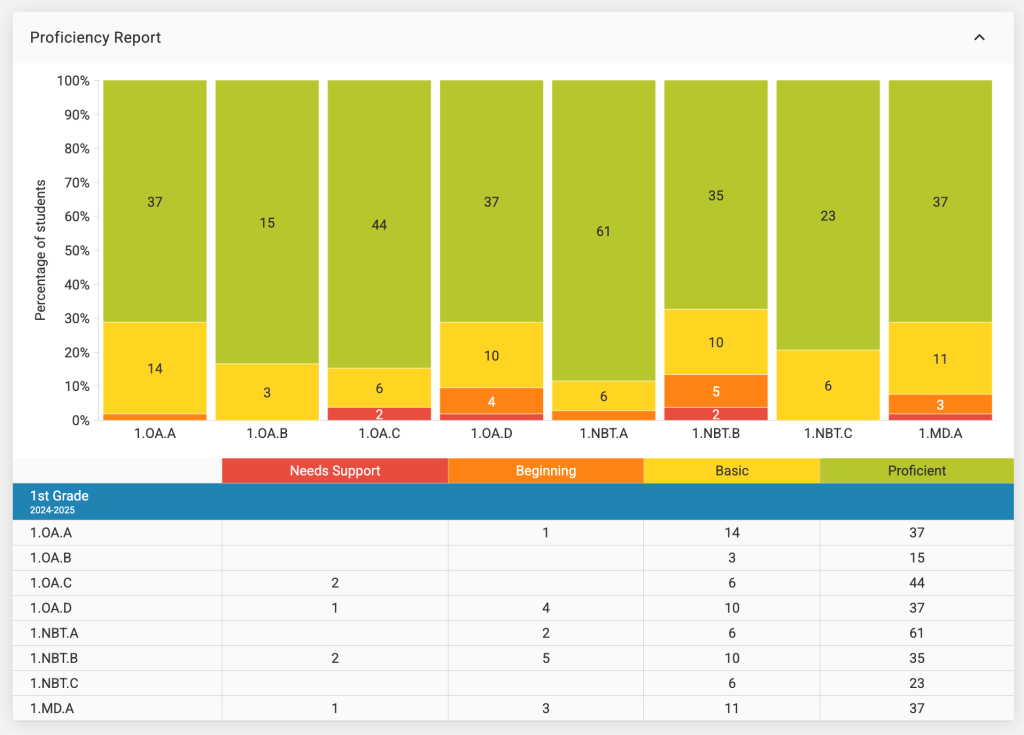
Effective analysis focuses on what matters most—grade level domains or, if available, district-designated priority standards. These critical skills form the foundation for future learning and deserve careful attention. In the Standards Analysis report above, a first grade team examined their priority standards (based on Achieve the Core recommendations). Telling patterns emerge: standards where 80% or more of students demonstrate proficiency generally indicate solid class-wide mastery, suggesting readiness to build on these concepts next year. In contrast, standards showing scattered performance levels across the proficiency spectrum highlight areas that will likely need reinforcement through spiral review in the fall. This focused approach helps educators distinguish between concepts students have thoroughly grasped versus those requiring additional support.
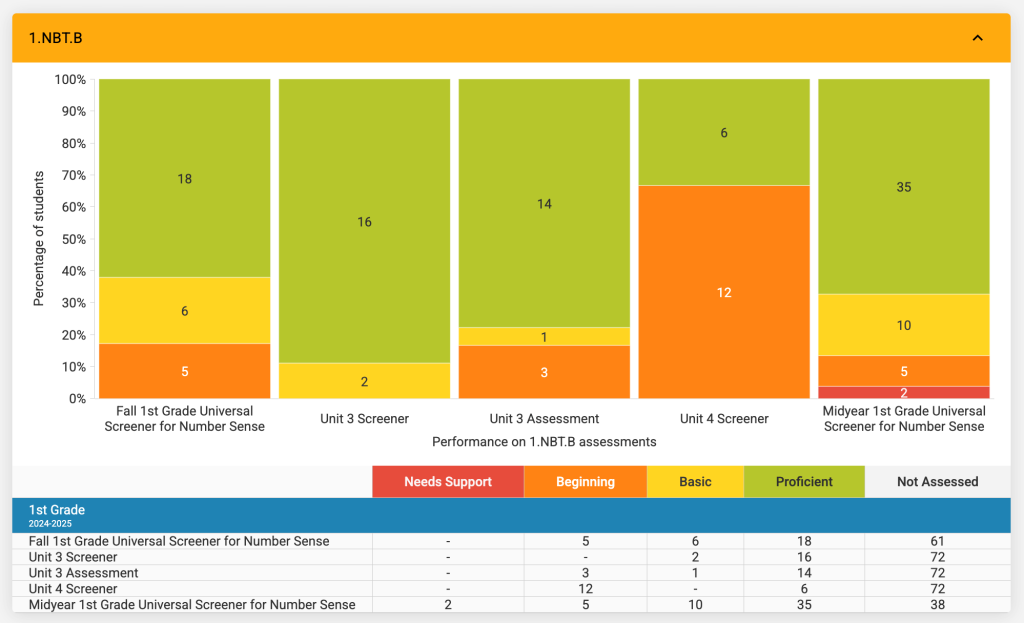
Once areas needing further attention are identified, the Standards Growth report reveals where standards were taught throughout the academic year. This powerful visualization tool shows how student performance on specific standards has changed over time, revealing when concepts were introduced, reinforced, and assessed. By examining the timing of instruction relative to proficiency patterns, teachers can determine whether struggling standards simply need more time or require completely different instructional approaches. This longitudinal view provides valuable context for planning next year’s pacing calendar, allowing educators to allocate additional time to historically challenging standards or introduce prerequisite skills earlier in the sequence. For students continuing to struggle with specific standards, these insights help teachers develop more targeted summer learning recommendations.
Question 2: Did students grow in their learning?
Growth manifests differently depending on where students began their learning journey. Effective analysis examines not just whether students improved, but how their growth compares to expected trajectories based on their starting points.
Forefront’s Sankey chart provides a visualization of student movement between performance categories between entities. The above report shows how many students advanced from “beginning” to “basic” or from “basic” to “proficient” between assessment windows. Patterns may indicate which instructional approaches most effectively accelerated growth for specific student groups.
When analyzing growth, monitoring intervention students can be particularly illuminating. Their progress often tells a compelling story about the effectiveness of differentiation strategies. The Assessment History tab in Forefront allows teachers to compare year-long proficiency patterns on one page, making growth visually apparent even for students who haven’t yet reached grade-level benchmarks.
It’s important to remember that growth in student learning isn’t always linear. The Standards Growth Report may reveal that some skills show steady improvement while others demonstrate a “sawtooth” pattern of advancement and regression as concepts become increasingly complex. These patterns help distinguish between surface-level understanding and deep learning that persists even as application contexts become more challenging.
Educators seeking additional support can access this recent webinar on using the reporting suite to dig deeper and analyze student growth, or reach out to the Forefront team by emailing support@forefront.education.
Question 3: How effectively did teachers monitor progress throughout the year?
The frequency and consistency of progress monitoring directly impacts a teacher’s ability to make timely instructional adjustments. Forefront’s updated spreadsheet features have transformed how educators can collect and analyze repeated measures throughout the year. Once teachers identify areas that need improvement, they should determine whether the curriculum includes appropriate opportunities for remediation or if they need to supplement with additional resources. After this review, they can plan next steps for intervention and reassessment.
The most effective monitoring zeroes in on the specific skills targeted during intervention, rather than relying on broad measures that may obscure incremental growth. Teachers should review their assessment choices to ensure the tools are sensitive enough to capture the small but meaningful gains that often come before more significant progress.
By reflecting on their monitoring practices, teachers can refine their assessment routines for the coming school year, ensuring they collect the right data at the right times to guide instruction.
Conclusion: Turning Reflection into Action
As the school year concludes, insights gained from structured data reflection become the foundation for next year’s success. The patterns revealed—mastered standards, growth trajectories, and monitoring effectiveness—provide clear direction for instructional planning. Documenting these findings while they’re fresh creates a bridge between this year’s learning and next year’s teaching.
Sharing key insights with both receiving teachers and students’ families can extend the impact of this reflection. For colleagues, a simple summary of class-wide strengths and needs helps ensure continuity of learning. For parents, specific guidance on summer reinforcement activities based on data analysis demonstrates commitment to ongoing student growth.
Effective data analysis isn’t about judgment but about improvement. The questions explored in this article help transform assessment results from final pronouncements into starting points for continued development. Approaching end-of-year reflection with curiosity and purpose represents an essential step in the ongoing cycle of teaching, assessing, reflecting, and refining that defines excellent instruction.
For additional support with end-of-year data analysis or to explore more features in Forefront that can enhance assessment practices, educators can contact the support team at support@forefront.education.
About us and this blog
Our team and tools help schools implement standards-based grading, streamline assessment systems, and use meaningful data to drive decision-making.
Getting Deeper with Forefront Reports
Dig deeper in the Forefront reporting suite -- and start thinking about growth! In this 30-minute presentation, you will learn how to generate more complex reports, particularly reports that focus on growth. Teachers and leaders with data from multiple assessments will be able to follow along and create reports that give a deeper understanding of student learning as it evolves over time.
Watch this webinar on-demand from Forefront Education's client success team, recorded on September 19, 2024.
More from our blog
See all postsForefront is the only assessment data solution optimized for classroom assessment results, leveraging these results to fuel instruction, PLCs, and grading. Elevate meaningful assessment data district-wide to transform how you understand and communicate about student learning across your schools.
Copyright © 2025 Forefront Education, Inc. All Rights Reserved.


